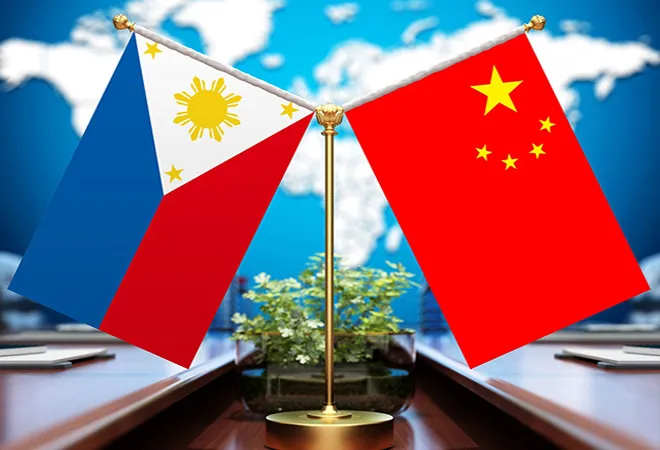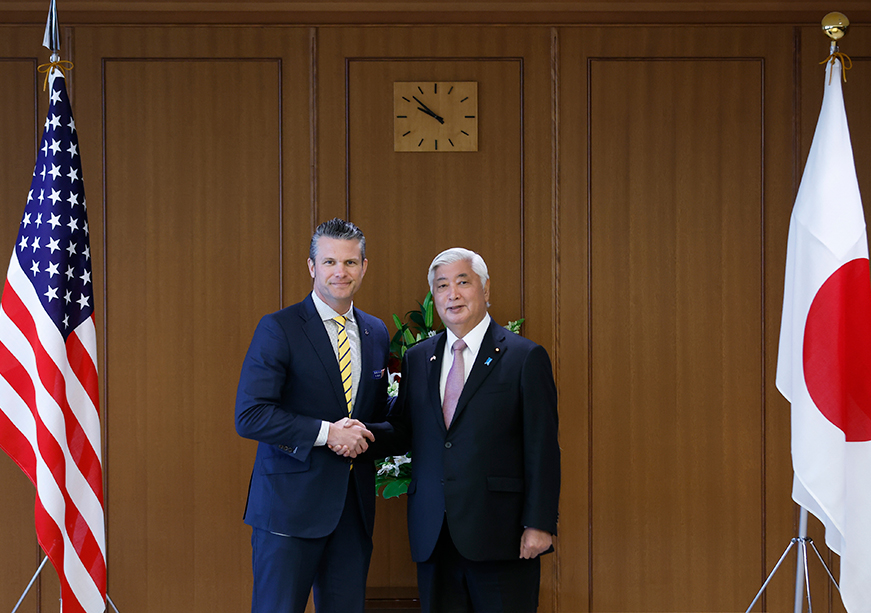
On the 96th anniversary celebration of the People’s Liberation Army (PLA) in the city of Mandaluyong, Chinese Ambassador to the Philippines, Huang Xilian, floated the idea of holding joint military exercises with the Philippines. While such a proposal was done in an informal and unofficial fashion, as explained by Armed Forces of the Philippines (AFP) Chief General Romeo Brawner Jr., it was also reported that the AFP has not closed its doors to the proposal.
While this development continues to generate speculation on whether such an arrangement may eventually take shape under the current administration of President Ferdinand Marcos Jr., the more important question is—in the unlikely scenario where such drills will materialise, will they significantly improve bilateral security relations between both countries?
Significance of joint military exercises
Joint military exercises, as a form of defence diplomacy, have significantly increased in their utility at a time when the international security landscape continues to face a plethora of emerging traditional and non-traditional security issues. On the operational front, bilateral military drills allow countries to increase their mutual awareness and helps them get familiarised with each other’s military procedures and defence technologies. This creates a functional opportunity for both sides to effectively train with each other’s crew. Such comprehension is vital for joint operations when war breaks out or when collectively addressing a series of non-traditional issues including humanitarian assistance; anti-piracy; illegal, unreported, and unregulated (IUU) fishing, etc.
Joint military exercises, as a form of defence diplomacy, have significantly increased in their utility at a time when the international security landscape continues to face a plethora of emerging traditional and non-traditional security issues.
On a more symbolic front, bilateral military exercises are important sources of strategic signalling, often against a third country that is perceived as a threat. Given the sensitivity of these exercises in terms of national security calculations, they also demonstrate how militaries from both sides possess a heightened sense of mutual trust and confidence in each other’s interests towards common goals in the region. This confidence-building measure further indicates the faith both parties have for one another, beyond language, culture, and race, at a time when the evolving nature of international geopolitics continues to deepen levels of discord among countries.
However, such benefits are not automatically achieved between parties that conduct bilateral military exercises. Rather, these rewards will only be reaped if existing bilateral conditions between both countries are conducive to functional and deep levels of strategic cooperation. This pre-requisite, therefore, puts into question the current state of bilateral security relations between Manila and Beijing. Accordingly, China has been undeterred in its desire to alter not only the geography but also the balance of power in the South China Sea, largely in its favour. Along with the enhancement of its anti-access/area denial (A2/AD) capabilities, China also continues to build sophisticated defence infrastructure on the disputed features of the South China Sea. Such activities come directly at the expense of Philippine sovereignty and sovereign rights.
Current state of bilateral relations between Philippines and China
The Chinese Coast Guard (CCG) also constantly indulges in borderline grey zone manoeuvres, such as harassing the Philippine Coast Guard (PCG) and Filipino fishing vessels, and using its maritime militia to swarm waters that are within the Philippines’ exclusive economic zone (EEZ). More importantly, while Marcos Jr. continues to emphasise his willingness to prioritise diplomatic negotiations with his Chinese counterpart Xi Jinping, there are no signs to indicate Beijing’s willingness to manage its belligerence and narrowly defined designs for the region. In fact, on several occasions, China often takes the opposite route vis-à-vis the agreements made between Manila and Beijing. In January, Marcos Jr. and Xi met in Beijing to manage their countries’ ongoing maritime dispute. The meeting resulted in several political pledges that were meant to serve as an avenue to eventually resolve outstanding bilateral security issues.
Along with the enhancement of its anti-access/area denial (A2/AD) capabilities, China also continues to build sophisticated defence infrastructure on the disputed features of the South China Sea.
However, a few weeks after this trip, a CCG vessel pointed a military-grade laser at a PCG vessel to block the latter from conducting a resupply mission to its vessel, the BRB Sierra Madre, within the Philippine EEZ. Also, in February, 26 vessels of the Chinese maritime militia were identified around the Ayungin and Sabina Shoals inside Philippines’ EEZ. Similarly, 42 suspected Chinese maritime militia vessels were spotted within the vicinity of the Pag-Asa, which is the largest island of the Philippines’ Kalayaan Group of Islands (KGI). In fact, days after the visit of former Chinese Foreign Minister Qin Gang to Manila in April—which also featured similar pledges for peace in the South China Sea—a CCG vessel provoked a PCG vessel in Philippine waters in a way that was described as dangerous.
Recognising the rising tensions created by China, Marcos Jr. was quick to mobilise the Philippines’ defence network by not only deepening but also broadening the scope of its security ties with its sole treaty ally, the United States (US), by adding four more bases to the bilateral Enhanced Defence Cooperation Agreement (EDCA). More so, Manila also continues to engage proactively with both Japan and Australia, thus narrowing the functional gap of the US hub-and-spokes network in the Western Pacific. The evolving four-way arrangement also serves as an opportunity to conduct bilateral and multilateral maritime patrols with Washington, Tokyo, and Canberra. Such exercises will further enhance the growing strategic convergences the Philippines has with its like-minded partners.
However, such developments have generated concerns in Beijing regarding their possible implications for China’s power projection capabilities and influence in Southeast Asia. Therefore, in a bid to improve its image as a security partner, China conducted noteworthy military exercises with Southeast Asian countries including a first-ever naval exercise with Cambodia in March, the second joint naval exercise with Singapore in May, and an upcoming multilateral joint exercise named Aman Youyi with Cambodia, Laos, Malaysia, Thailand, and Vietnam later this year.
The evolving four-way arrangement also serves as an opportunity to conduct bilateral and multilateral maritime patrols with Washington, Tokyo, and Canberra.
In the context of the Philippines, the People’s Liberation Army (PLA) Navy’s training ship Qi Jiguang arrived in Manila for a goodwill visit with the aim of improving Filipino public opinion. However, such attempts mean very little, given that both the national and the global audience are aware of Beijing’s inconsistent behaviour of saying one thing at the political level but doing another on the ground. In fact, this visit of goodwill came just two months after the Chinese ambassador’s veiled threat against the safety of overseas Filipino workers (OFW) in Taiwan amidst the strengthening strategic partnership between Manila and Washington.
More recently, on 5 August, a CCG vessel blocked PCG vessels that were on resupply runs to the BRP Sierra Madre at the Ayungin Shaol in the West Philippine Sea. Moreover, the CCG also directed its water canon towards the PCG as an act of provocation. This took place in the context of Beijing’s renewed sovereignty claims over the Ayungin Shoal, which lies within the KGI located less than 200 nautical miles off the Philippine province of Palawan. Interestingly, this occurred only days after the meeting between Xi and former Philippine President Rodrigo Duterte in Beijing, where the former asked the latter to facilitate friendlier ties between the Philippines and China. Following this issue, Beijing began making claims that the Philippines promised to remove its naval ship from the shoal. This, however, was quickly discredited by Manila due to the absence of any evidence or documentation.
Conclusion
Therefore, it can be assumed that conducting joint military drills with China will do little in significantly improving the status of security ties between both countries, given the state of current bilateral relations continues to be marred with heightened levels of mistrust, inconsistency, and uncertainty of future intentions. While it may be argued that such activities can be limited to non-traditional security areas that do not involve the West Philippine Sea, it is important for Manila to evaluate whether such drills will enhance Philippine security for the long term or merely serve as a temporary symbol of accommodation towards Beijing. If it is the latter, then there are several other sustainable security partners Manila can conduct such drills with.
A CCG vessel blocked PCG vessels that were on resupply runs to the BRP Sierra Madre at the Ayungin Shaol in the West Philippine Sea. Moreover, the CCG also directed its water canon towards the PCG as an act of provocation.
In fact, even during the former administration of President Rodrigo Duterte, which accommodated China, a similar idea was also floated. However, due to the Philippine defence and foreign policy establishment’s wariness towards Beijing, it eventually never materialised. Therefore, while conducting joint military drills with China is possible in theory, it is unlikely that such drills will result in a significant improvement of trust and the deepening of strategic bilateral ties due to Beijing’s general unwillingness to curb its assertive regional ambitions, which continue to compromise Philippine sovereignty and sovereign rights.
Don McLain Gill is a Philippines-based geopolitical analyst, author, and lecturer at the Department of International Studies, De La Salle University (DLSU).
The views expressed above belong to the author(s). ORF research and analyses now available on Telegram! Click here to access our curated content — blogs, longforms and interviews.




 PREV
PREV


